

Josh Nevett
CarExpert's top five large SUV reviews of 2025
1 Day Ago
The new sub-$30k entry point into MG’s flagship HS range trims the fat but maintains a lot of good stuff in the right places.
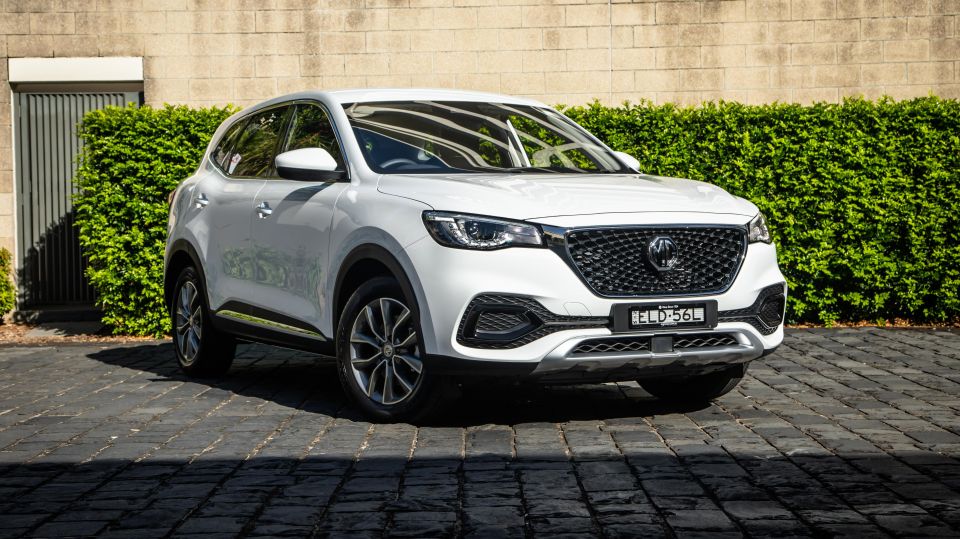
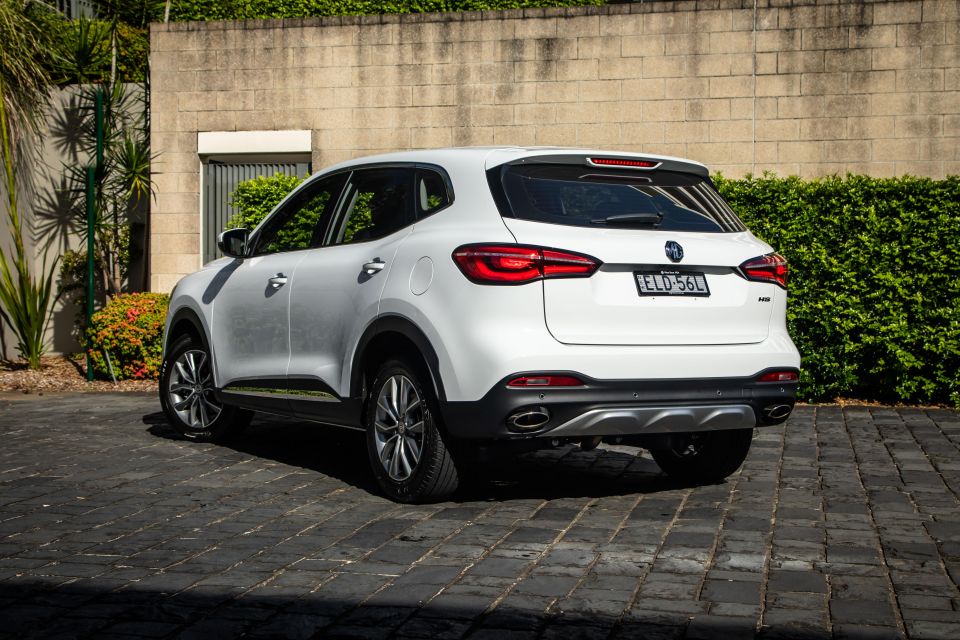

Journalist
New from
$28,990
excl. on-roads

Journalist
New from
$28,990
excl. on-roads


Journalist
New from
$28,990
excl. on-roads

Journalist
New from
$28,990
excl. on-roads
Quickly see how this car stacks up against its competition. Select any benchmark to see more details.
Where expert car reviews meet expert car buying – CarExpert gives you trusted advice, personalised service and real savings on your next new car.
It’s fair to say ‘new MG’ is making strides in the direction it hopes to head, building sales and growing a reputation for offering motoring of genuinely competitive quality, elevated to a large extent on its flagship HS mid-sized SUV range.
So you have to wonder if the timing is ideal to lob a thinned-out, price-busting HS variant. At just under $30,000 parked in your driveaway, the new 2021 MG HS Core whiffs a little of cheaper than cheap, at odds to some extent of the place of perception MG is working to hard to arrive at if it indeed hasn’t already.
Well, it depends. Understandably, when pricing is this trim obviously some things have to give and corners get cut. And whether or not the Core is a critical success here in review largely depends on what’s cut from where and how much goodness has been retained despite the slim sticker price.

Until now, the HS form guide has looked promising. Unlike some rivals, MG hasn’t opted for lower-rent powertrains in more affordable variants. And, its MG Pilot suite of active safety and conveniences remain in tact top through the bottom of the range.
The Core hasn’t skimped on either of these departments: same oily bits underneath, same tech in crucial areas you want them in a family-hauling device.
So far, so decent. However, logically, the Core overall pitch hinges on where MG has trimmed back the excess fat elsewhere and by how much.
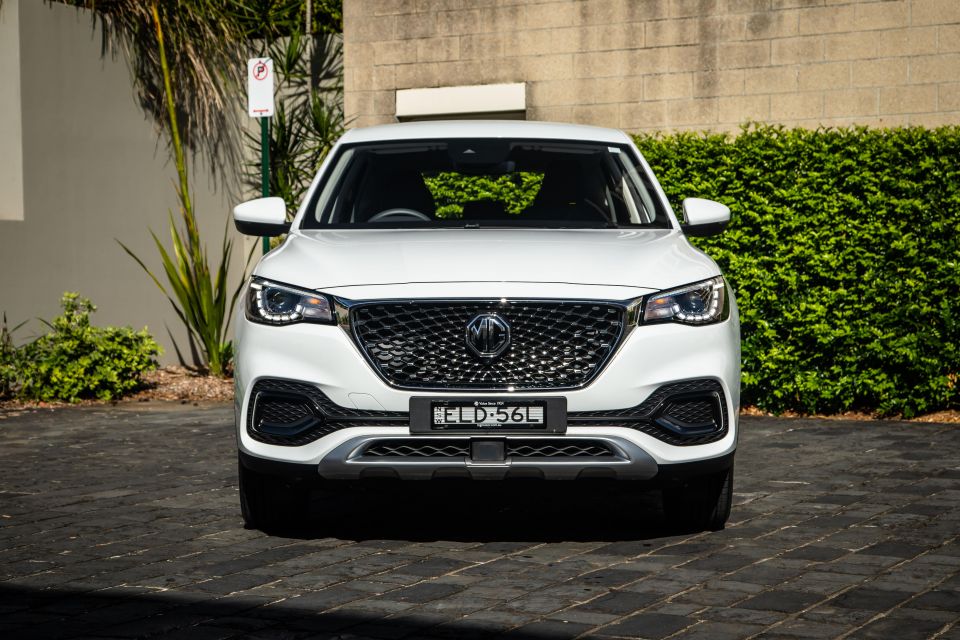
The Core supplants the Vibe as the cheapest way into the HS SUV range, dropping the entry point by $2000 to $29,990 drive-away. The standard HS range extends up through five variants to the range-topping 2.0-litre turbo Essence X at $42,990 drive-away, plus the electrified MG HS Plug-in Hybrid that’s priced at $46,990 drive-away.
As we outlined in our HS Core reveal story, base versions of Hyundai Tucson, Kia Sportage and Mitsubishi Outlander also dip below a $30k threshold, albeit before on-road costs and with manual transmissions. The auto-equipped Honda CRV Vi enters the fray at $30,490 list and you’ll need mid thirties for an automatic Toyota RAV4 which equates to about $39k drive-away.
The MG HS is joined at the mostly keenly priced end of the medium SUV segment with the likes of the due-to-be-updated Haval H6 and SsangYong Korando, both at $28,990 driveaway at the time of writing (though MG has countered with its own conditional $1000 cash-back offer on MY20-plated HS vehicles to create a short-term even playing field).
The Core variant comes in a choice of three colours, no-cost standard white as well as metallic black and metallic blue each asking for an extra $700.
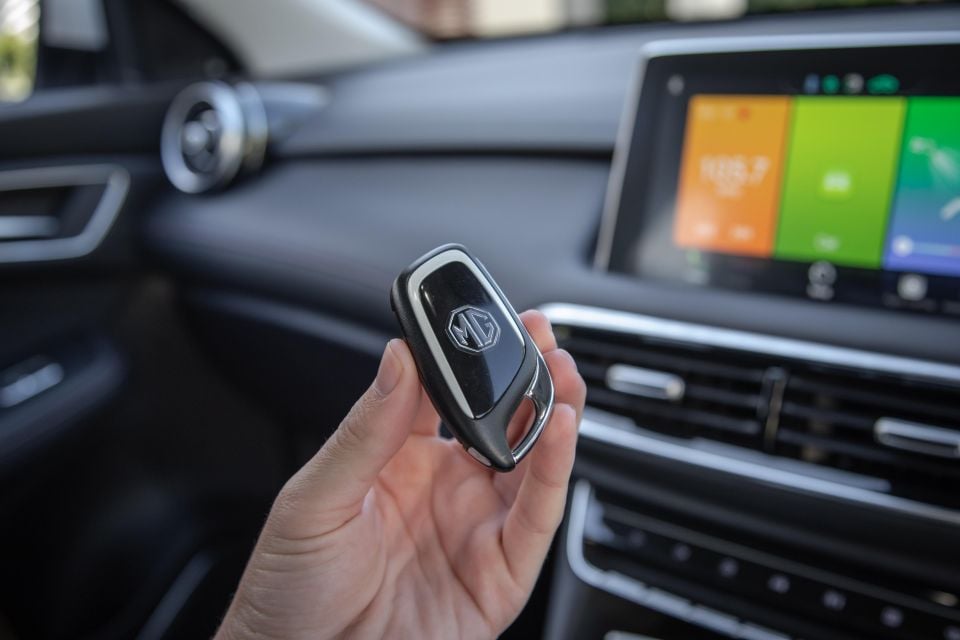
Buy your new car without the stress. It's fast, simple and completely free.

Great service from Travis and team, second time I have used this business would not hesitate to recommend them to anyone
Craig C.
Purchased a Ford Ranger in Sunshine Coast, QLD
CarExpert helped Craig save thousands on his Ford Ranger, now let us save you on your next new car.
Find a dealThe Core trims the equipment list in many of the expected areas though key to its appeal is inclusions where it matters, not just functionally but in feel-good – or at least feel-decent-enough for-the-money – effect.
Some of the inclusions, such as the retention of the larger 10.1-inch touchscreen and semi-digital driver’s instrumentation, are obvious. Others, such as retaining the nice faux leather door trim inserts of higher grade HS models, more subtly if still quite effectively lift the sense of quality.
MG could’ve downgraded key features – headlights, infotainment touchscreen – but instead seemed to have strategically skimmed cost around the edges, with the obvious exception of the fitment of cloth trim to replace the fake leather/PVC trim work found in the next-rung-up Vibe.
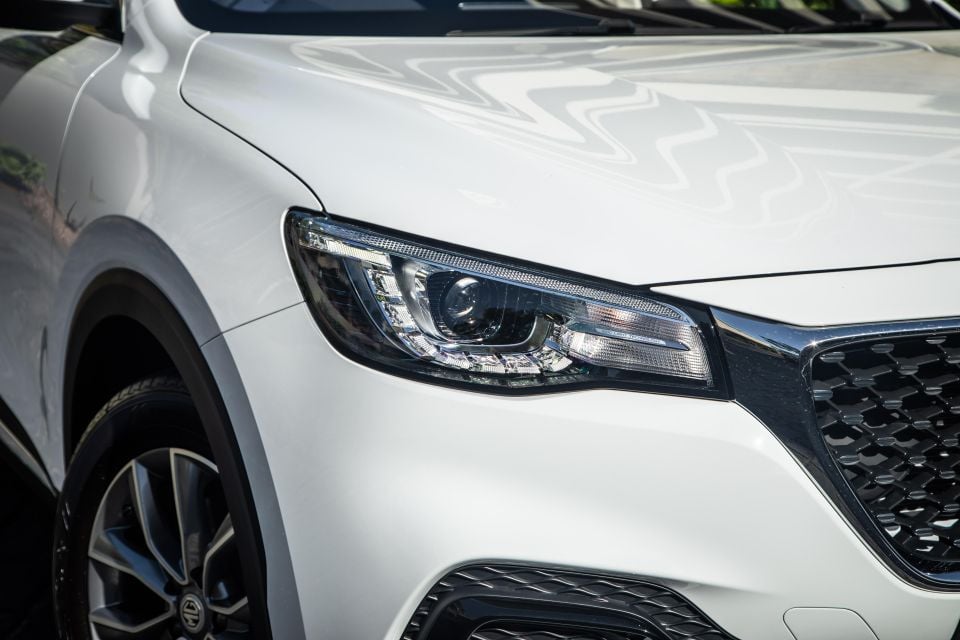
Outside, the Core fits automatic halogen projector headlights, LED daytime running lights and LED tail lights, 17-inch alloy wheels, electric mirrors, remote entry with keyless go, rear parking sensors, a reversing camera and adaptive cruise control.
It misses out on front fog lights, roof rails and mirror heating found on the Vibe but that’s about it for exterior cutbacks that appears as aesthetically fit as the Vibe above it in range.
Cloth, rather than leatherette/PVC seat trim, is the obvious ‘downgrade’ in the cabin, depending on the quality of the stuff used (see below). The seats are mechanical with six-way driver and four-way front passenger adjustment, and the wheel is fake leather.
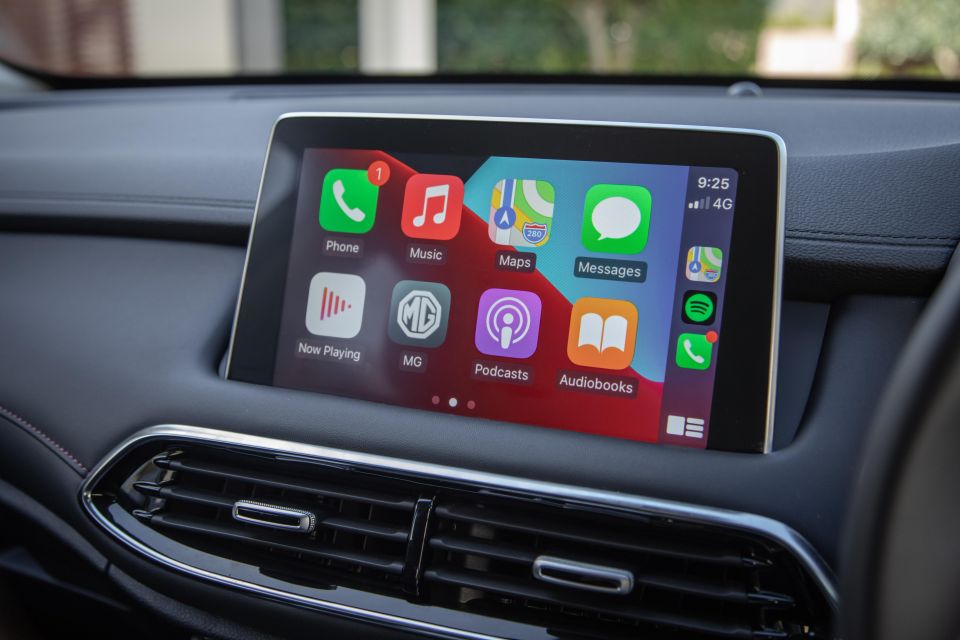
That 10.1-inch touchscreen infotainment system offers wired Apple CarPlay and Android Auto like other models in the HS range, if without DAB+ or the sat-nav found on high-grade versions.
There’s a sole USB-A port – the next grade up Vibe gets four – as well as a single 12-volt outlet up front and the manual single-zone air-con system doesn’t offer row two ventilation.
The second row seatbacks offer tilt adjustment and it fits a space-saver spare wheel. One cost cutting measure is that the removable parcel shelve is omitted from the spec list.
While the Core is light on for mod-cons its value pitch hits harder when you consider it invests more heavily in fulsome powertrain and active safety credentials.
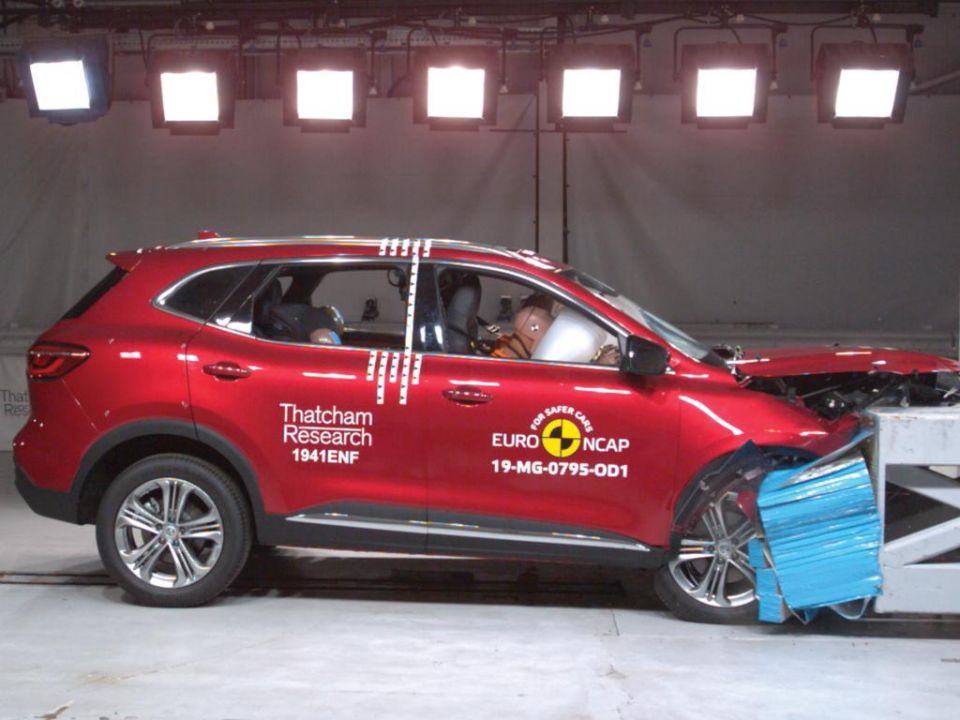
ANCAP rated the entire HS range as five stars in 2019 off the back of Euro NCAP assessment. It scored 92 per cent and 83 per cent for adult and child occupant protection respectively, with 64 per cent for vulnerable road user and 77 per cent for safety assist functionality.
The Core lacks none of the wide-ranging features marketed under the MG Pilot banner offered throughout the rest of the HS range.
As we wrote in our review of the Excite variant, “what you get is unusually extensive…for a $35,000 car” so that it’s all maintained a smidge under $30,000 drive-away here in Core form is impressive enough to make lesser-equipped rivals appear underdone.
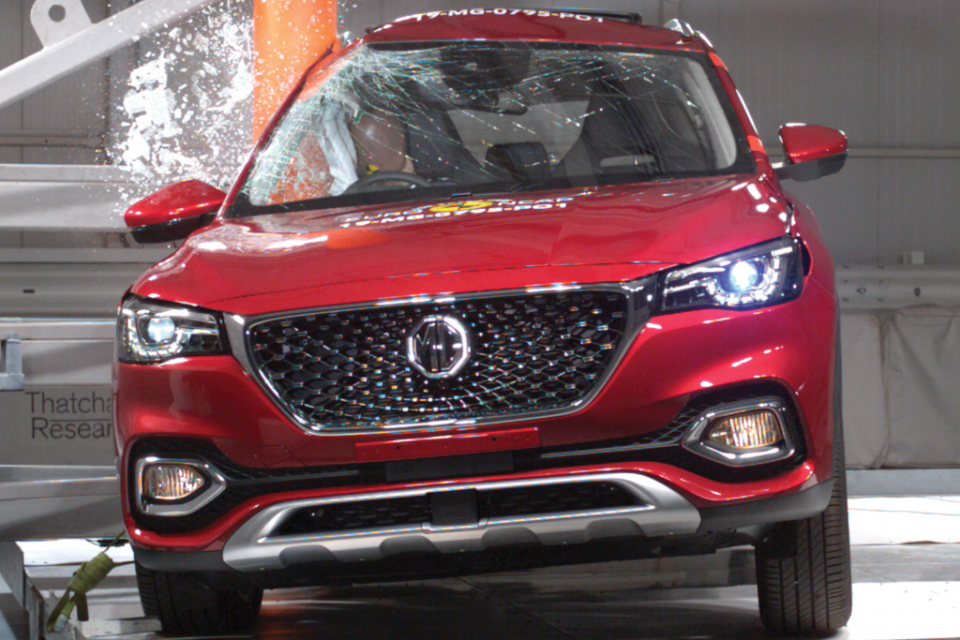
It fits all-speed autonomous emergency braking with pedestrian and cyclist detection, adaptive cruise control with traffic jam assist, forward collision warning, blind-spot monitoring, lane departure warning and active lane keep assist, rear cross-traffic alert and exit warning to alert for incoming cyclists. Tucked into the AEB/stability control smarts is active corner braking control, too.
The HS fits six airbags with dual front, side and curtain coverage and offers both ISOFIX and top-tether child seat anchorages in the rear.
Safety wise, the HS Core really measures up against most mainstream mid-sized SUVs and knocks key rivals such as the under-equipped Haval H6 out of the park.

Having spent some time in the higher-grade Excite recently, it’s pleasing to see that the base Core carries over a similarly neat execution without much dilution in overall presentation.
Large colour displays, strategic placement of gloss black and metal-look effects, a ton of leather-look vinyl with red stitching on the dash and upper door trims, and textured plastics conspire to an ambience that transcends the on-a-budget vibe. It looks welcoming and for the most part backs it up in the experience.
The wheel rim is supple enough to mask its urethane form just enough and the seat trim, while hardy, is reasonably comforting, even if some of the lumps in the cushioning won’t find favour with some occupant body types. The seat contours, front and rear, are sculpted nicely with more than a hint of sporty bolstering for good measure.
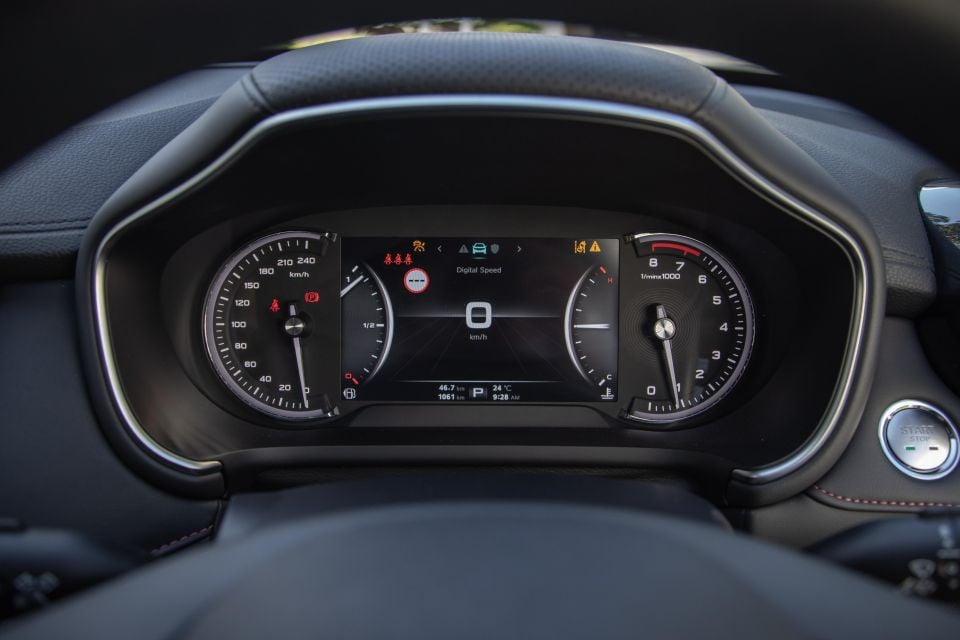
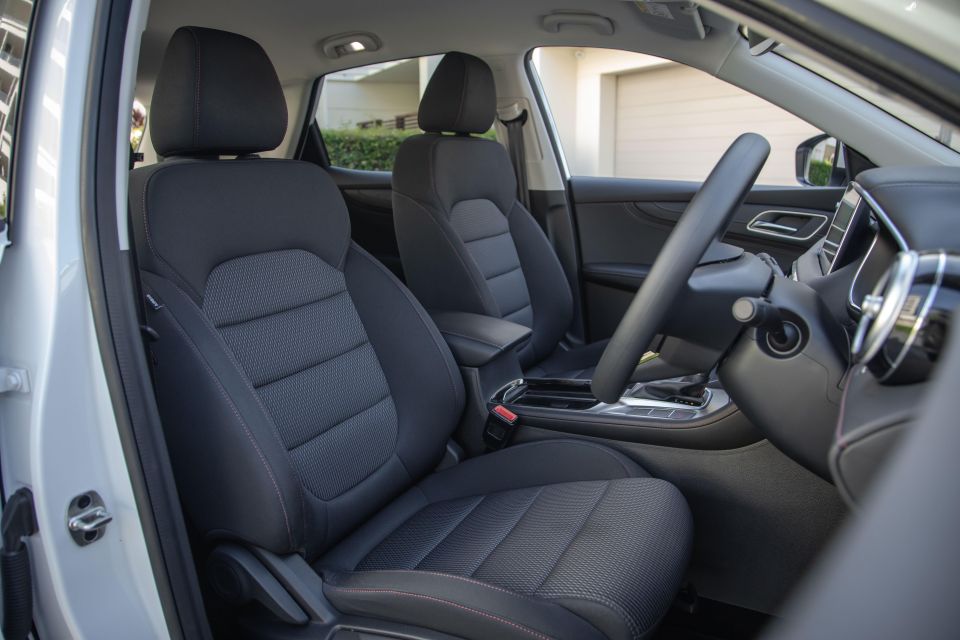
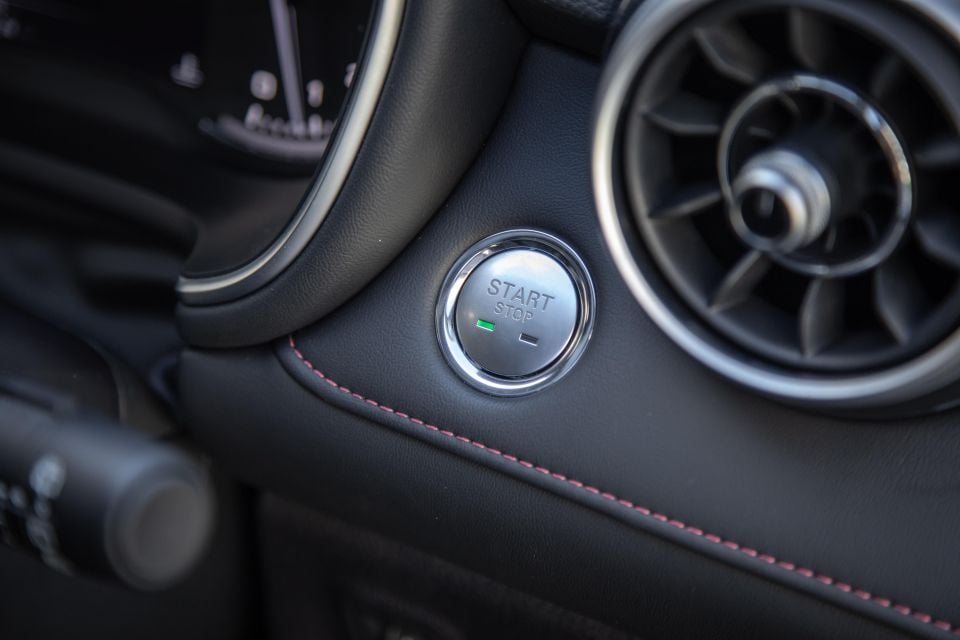
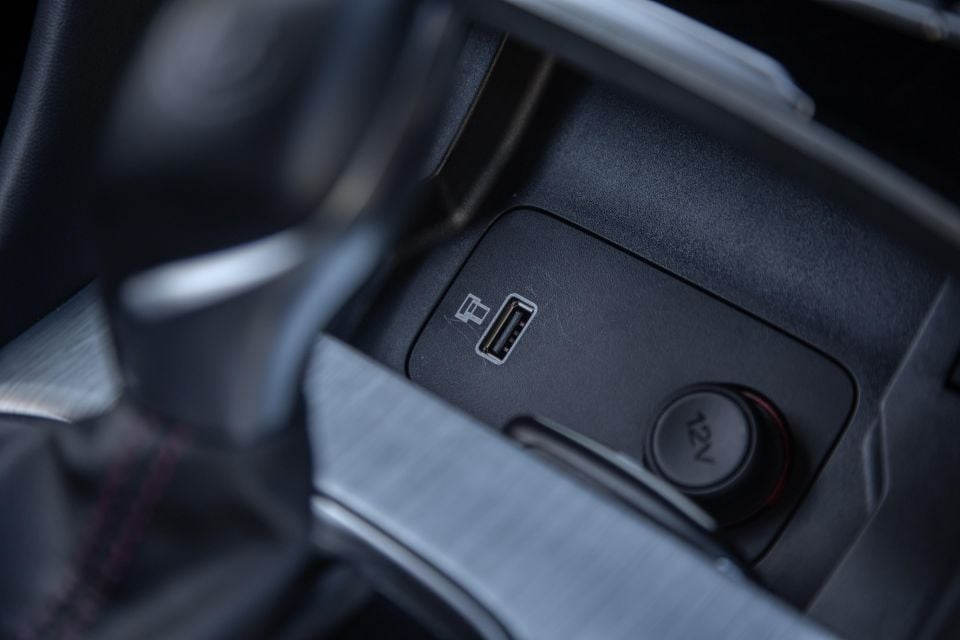
It does lack a little in design smarts: the USB and 12-volt cubby isn’t large enough to fit a phone, the only logical home a slot by the console’s dual cup-holders where you device will rattle around with annoyance. The console bin, glovebox and door bins, though, all offer quite generous oddment stowage, the latter large enough for bottles.
The displays are sharp and colourful, bringing a nice lift to the cabin, and both the driver’s screen and infotainment touchscreen really mint an upmarket theme beyond the Core’s price point. The switchgear and some of the buttons, though, do feel a bit flimsy even if texturally they look more solid than they actually are.
The instrument screen, for its part, is clear enough for even the most visually-challenged drivers, but it does miss a fairly large trick in that you can’t control audio – let alone Apple CarPlay or Android Auto mirroring functions – via its display and steering wheel controls.
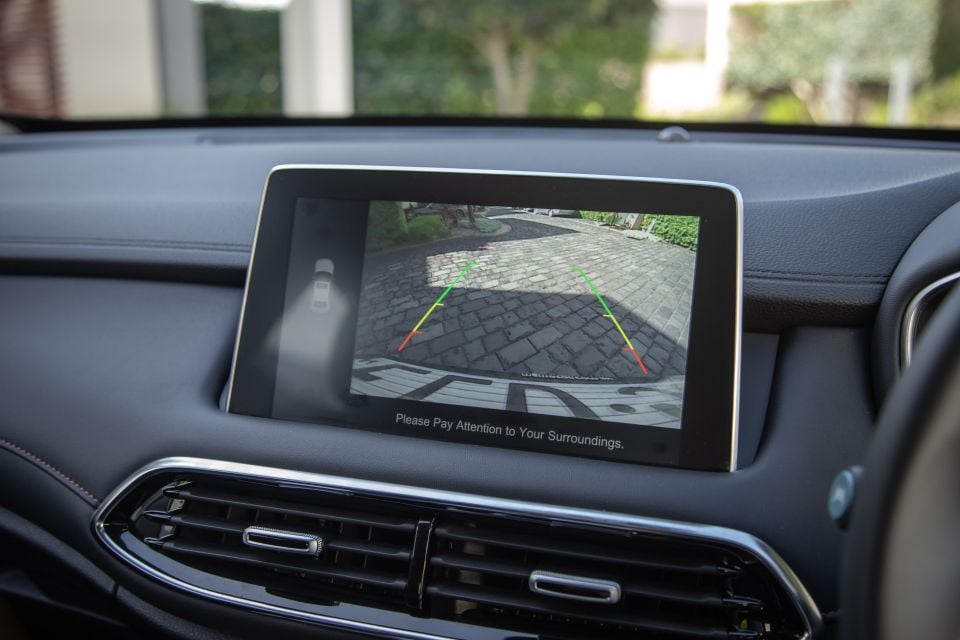
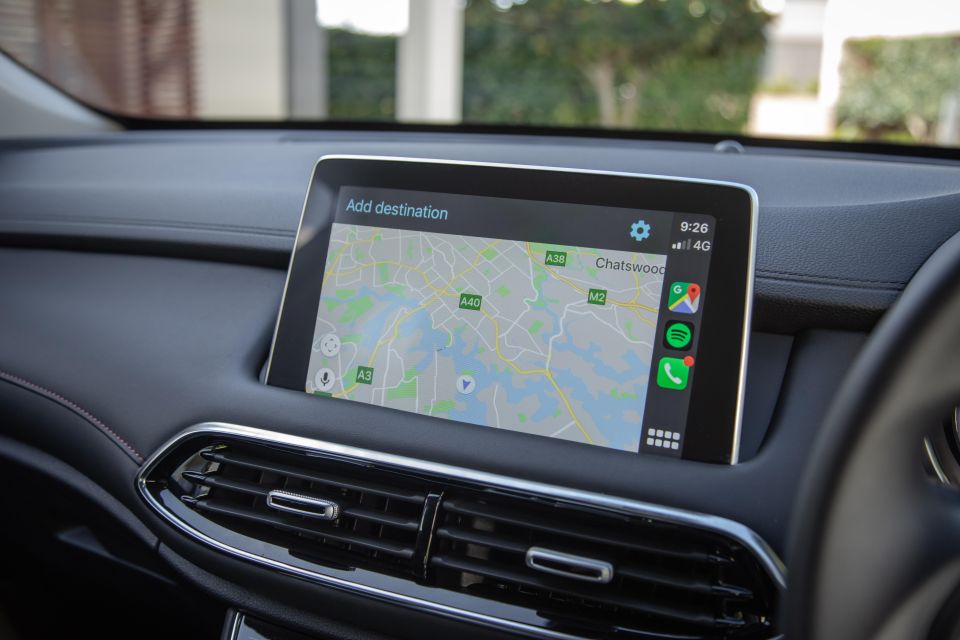
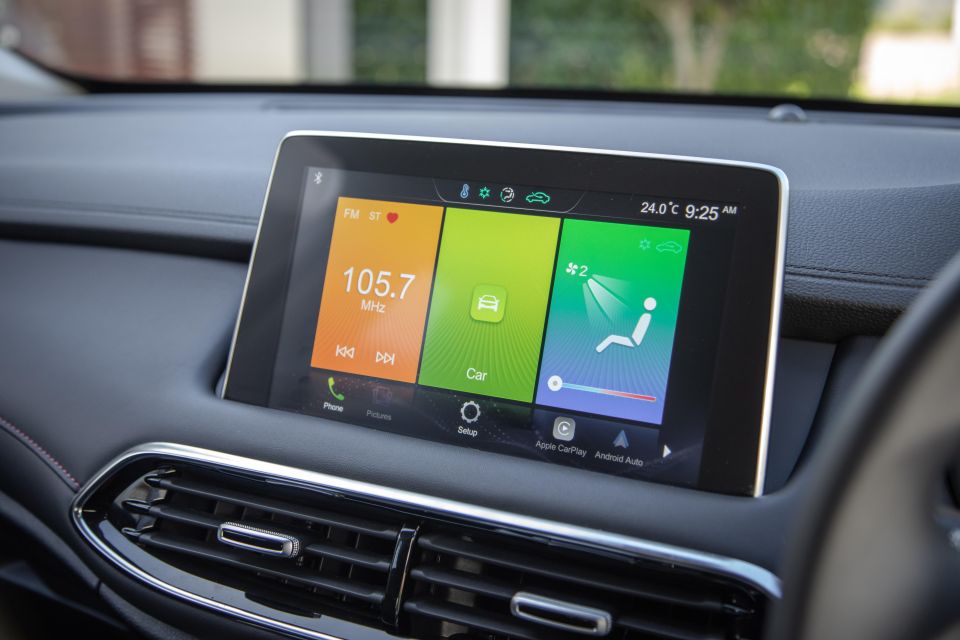
The 10.1-inch touchscreen offers nifty three-tile access various functions but it’s not without quirks. Some of the control menus, such as the terminally slot-to-load air-con screen, demand you have to hit the physical button array below the screen to exit its submenu.
Nitpicking, perhaps, but it’s a relatively quick fix away from more streamlined usability. It ought to have dedicated air-con controls outside the touchscreen format, and digital radio too.
One of the real HS highlights is rear roominess. Legroom is excellent, there’s only a tiny floor hump, headroom is generous and it’s properly adult friendly. Like other HS variants, the 60:40 split seat back has a couple of different tilt positions on offer, though you do need to reach over your should to the release latches to awkwardly adjust the angles.
There are a couple of cupholders in the fold-down armrest but there are no USB ports, 12-volt outlets or air vents for the rear passengers.
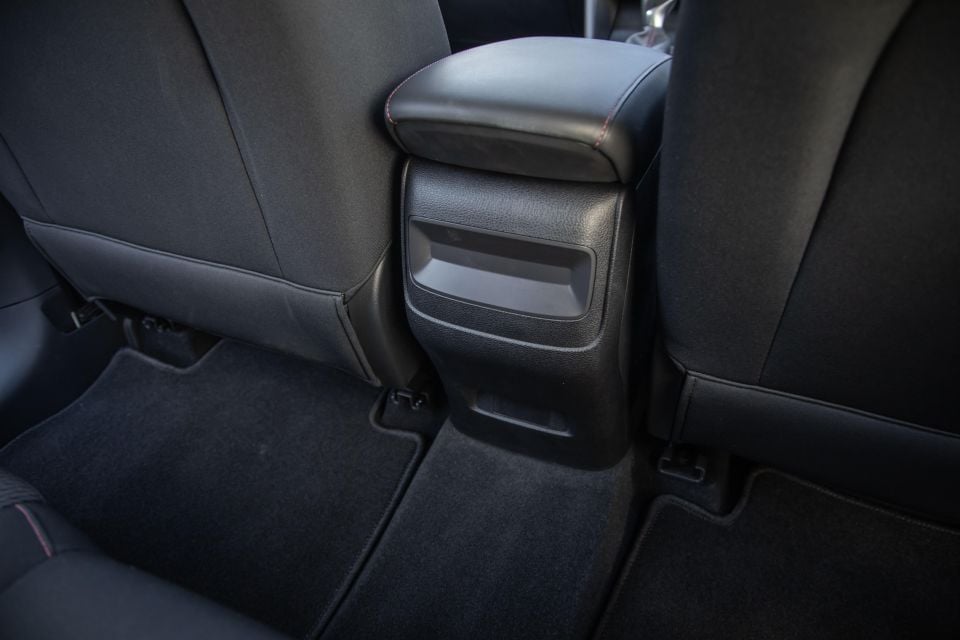
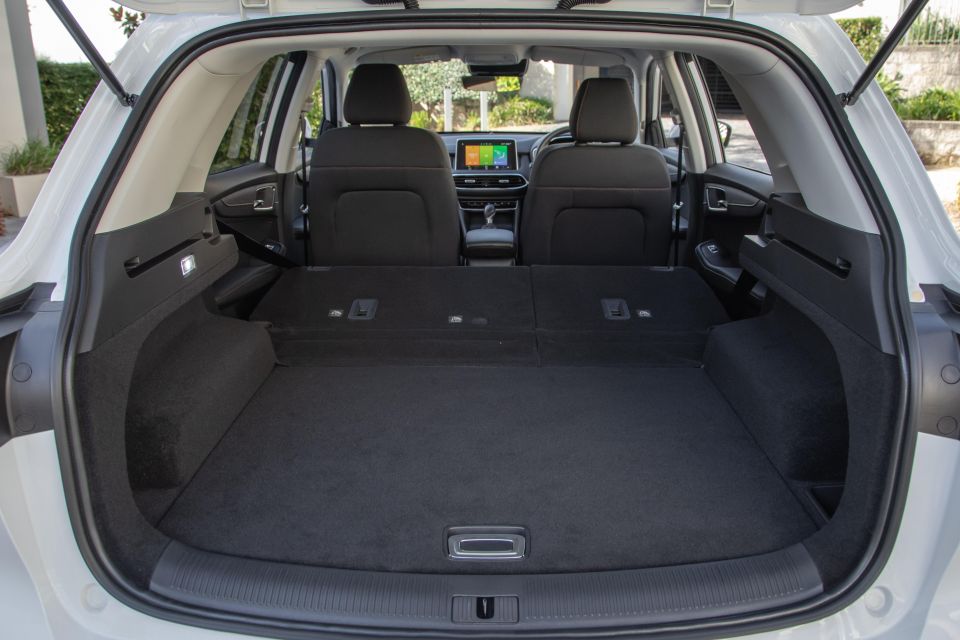
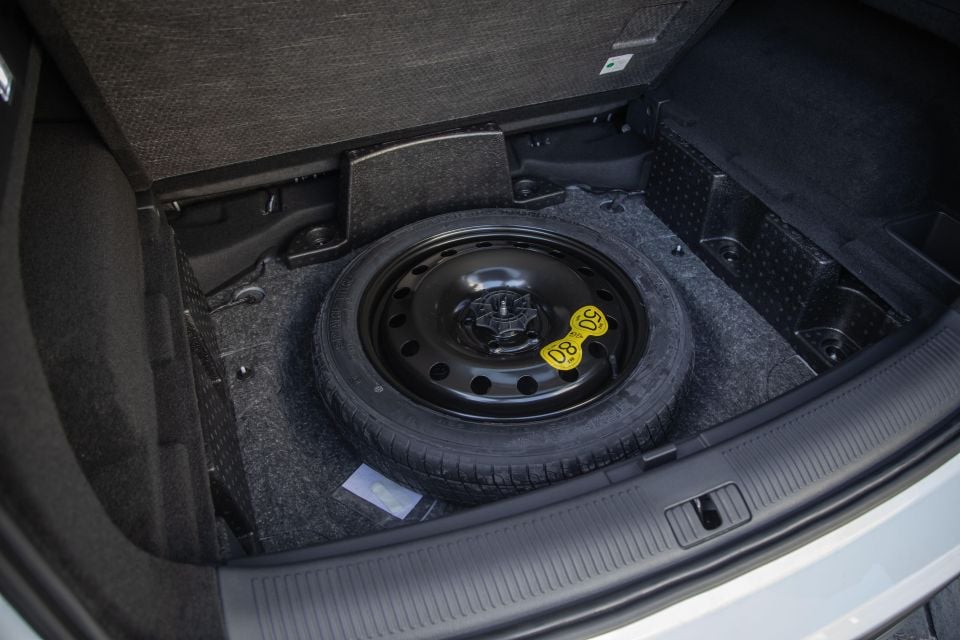
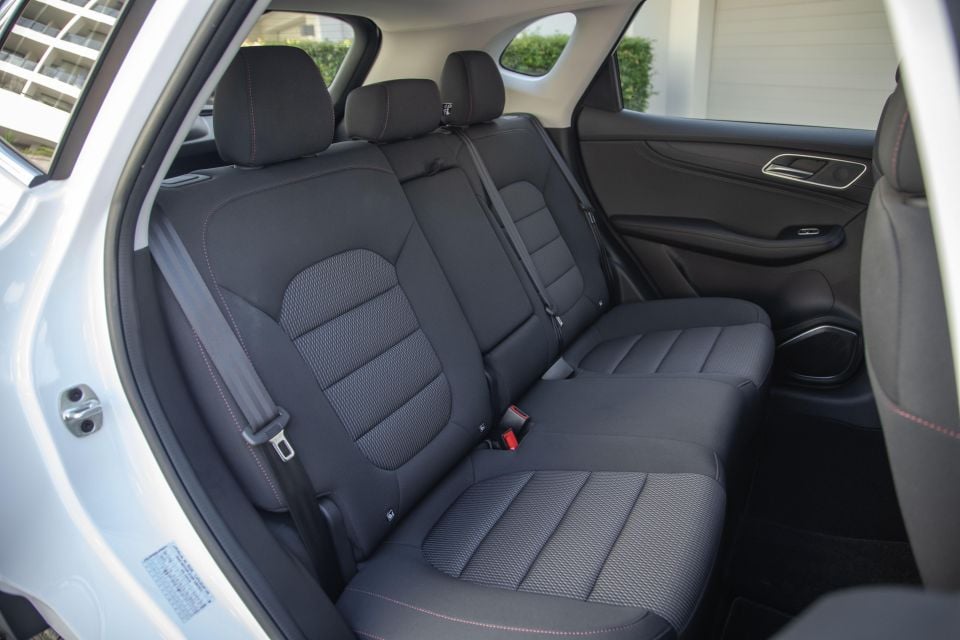
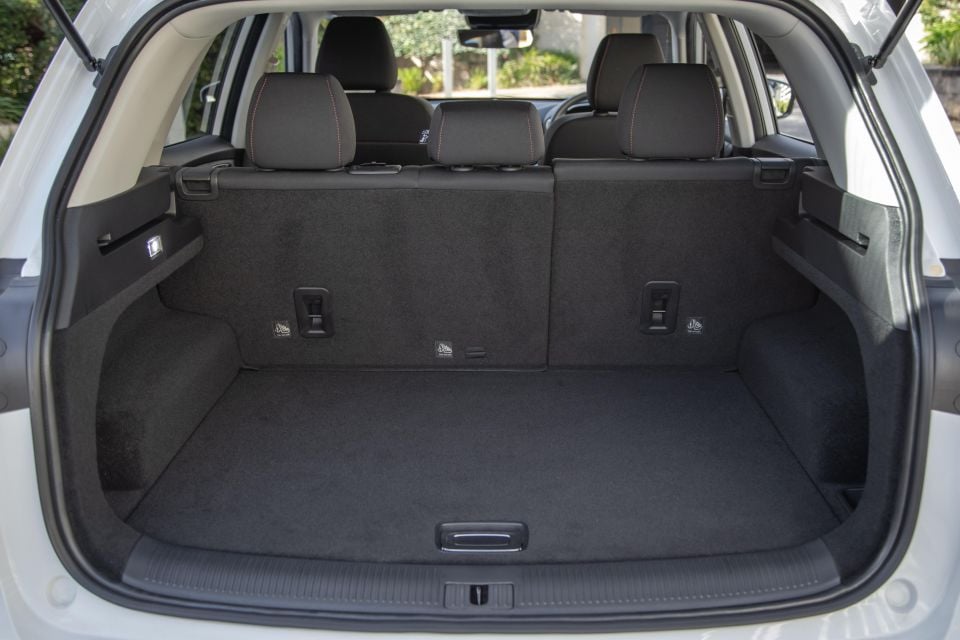
The boot area has a high floor height and could probably offer a bit more than its available 463 litres because there’s a whole lot of unused space between the floor and the top of the modest space saver spare located well below it.
It converts to 1287 litres to the window line with the rear seating stowed and an easy conversion because there’s no parcel shelf assembly to deal with, though the locating slots for its fitment remain as a reminder you’ve opted for the base model.
That said, the entire boot area is carpeted, which is a nice touch.
Must say, the interior fit-out is quite impressive for a mid-sized SUV of its price, with presentation beyond the call of duty even if it does lack a little in some details.
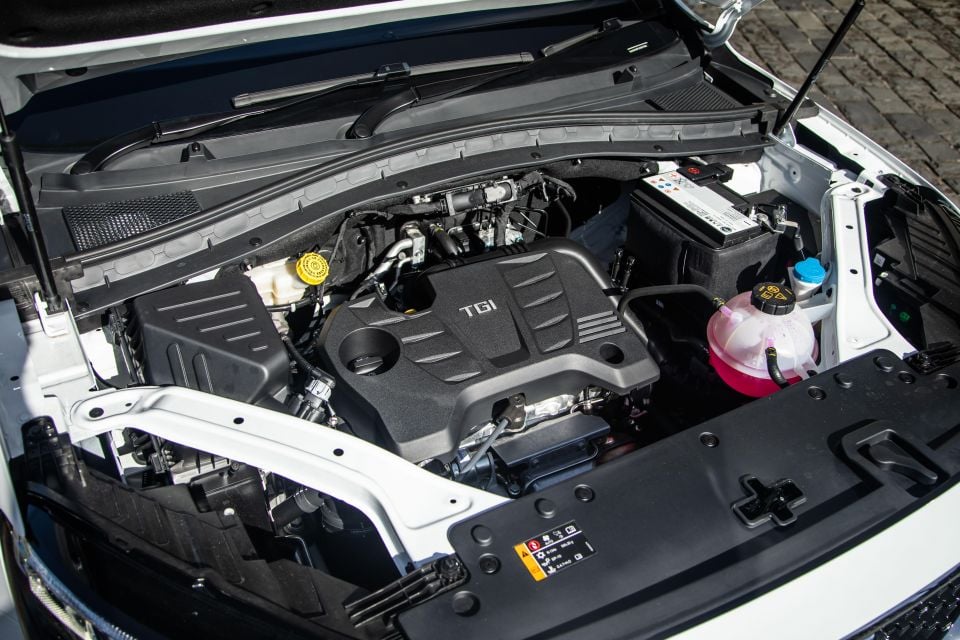
The MG HS Core runs a 1.5-litre turbocharged petrol four cylinder petrol engine that produces 119kW at 5600rpm and decent-for-segment 250Nm, albeit at a quite high 4400rpm peak.
It would be remiss right here not to mention that a larger 2.0-litre unit with all-wheel drive is being introduced into the HS fold – in the Excite X and Essence X – though it remains to be seen whether it finds its way under the bonnet of HS’s entry-level variant.
Like the rest of the range at the time of Core’s launch, the four-pot is backed by a seven-speed dual-clutch automatic transmission driving the front wheels. There’s no manual version currently on offer.

Where expert car reviews meet expert car buying – CarExpert gives you trusted advice, personalised service and real savings on your next new car.
Unsurprisingly, the 1.5-litre HS breed comes with the same combined cycle claim of 7.3L/100km, dropping to 6.2L for the highway cycle and rising to 9.2L for the city stuff.
This engine is Euro 5 compliant with a CO2 figure of 170g/km, and runs on a recommended 95 RON in its 55-litre tank.
Our assessment of the Core was conducted exclusively in the Sydney metro area though, as locals well know, much of normal commuting can be done between 80-110km/h along various motorways. On what’s practicably a more combined driving experience, the Core returned middle eights to low nines on average consumption.
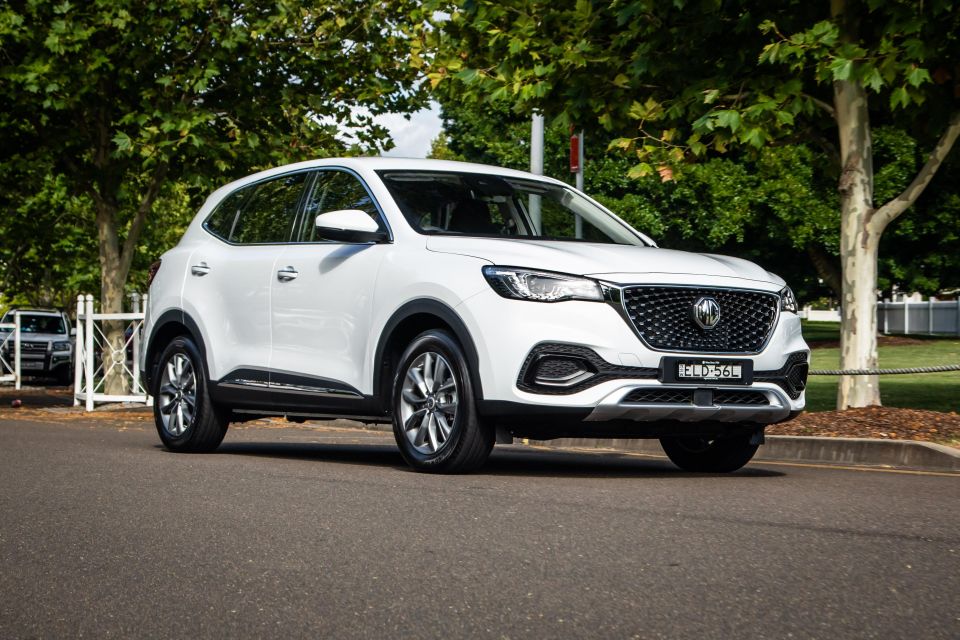
Small turbo engines paired with dual-clutch transmissions hauling mid-sized vehicles are often a recipe for incompetence, but the execution of the MG powertrain is quite decent indeed.
The engine has decent response and the gearbox shifts smoothly enough on a roll. As expected, though, the engine suddenly turned strained and breathless once you give it berries and when you ask for sudden acceleration.
It’s not that it lacks energy so much – its 250Nm out-punches a lot of competition out there – it’s just that peak torque sits so high in the rev range it take some effort to pluck during measured driving.
As we’ve reported with HS in the past, smooth progress demands progressive throttle input. Do so and the HS rewards with ample refinement for the fiscally lean end of family-sized motoring, where it’s occasional transmission clutch nudging off the mark ought to be considered no major markdown.

You can tap the transmission controller sideways for Sport mode, which tightens up response by a few shades but doesn’t uncork much extra enthusiasm bar holding onto shorter gears for longer periods.
Largely superfluous really, given there’s decent enough shove much of the time. It’s certainly more energetic than naturally-aspirated alternatives priced around Core money.
It feels solid and substantial if lithe enough and easy to punt around the ’burbs, the steering reasonably direct if a touch under assisted with fair amount of steering lock as a tiny nitpick. It lolls about a little on its suspension – strut up front, multi-link in the rear – for a slightly soft-edge dynamic that’s actually quite pleasing and, you sense, very much by tuning design.
Despite its softer nature the actual ride itself is middling, the damping a little firmer than you expect when you hit speed bumps and abrupt road surface changes. It isolates the cabin nicely in compression and settles quickly and confidently in rebound, only really becoming a bit unruly through a bit of suspension slapping here and there.

All in all, though, it’s quite a polished and refined thing around town or on the open road. It insulates occupants fairly well from ambient noise, too, and bar a bit of engine thrum it becomes whisper quiet along highway hotmix.
Sydney’s close quarter motoring combat does tend to trigger the HS’s active safety system occasionally and be it lane departure warning or forward collision warning its audible alerts are loud to point of near alarm. Not such a bad thing, really.
What’s quite cool is that you can dig through the touchscreen and customise which functions you want on, off or adjusted in functionality. Plus, there are shortcut buttons for stuff such as lane keeping on the column control stalks.
The nutshell summation here is that there’s nothing barrel-scraping about the how the HS Core drives. In fact, its pleasant demeanour and generally resolved, easy-to-use nature on the road certainly measures up nicely against mid-sized SUV asking for much more coin.

The HS petrol range is covered by a commendable seven years of unlimited-kilometre warranty for private buyers with a limited 150,000km for commercial use.
Roadside assistance is complimentary for the duration of the warranty.
Servicing intervals are at 12 months or a short 10,000km, with the first seven visits costing between $279.04 and $800.66 (sixth visit only), totalling $991.71 for the first three years (30,000kms) and $1708.29 when calculated over the first five years (50,000kms).
If you’re planning on clocking up a lot of kilometres, the MG does work out a little pricey compared with some rivals offering longer mileage between servicing, many of which are more affordable on average per visit.
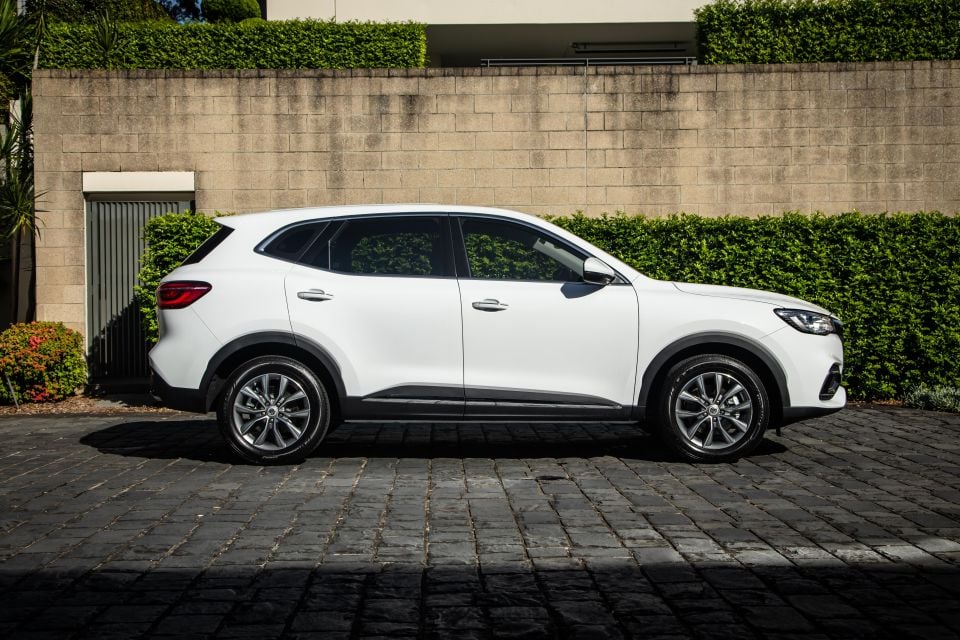
There are more than few entry-level mid-sized SUVs on the market that, in spec and execution, constantly remind you that you’ve scrapped the bottom on the range barrel.
It’s common enough tactic in the motoring industry to entice buyers into higher-grade variants.
The MG HS Core couldn’t be more different. In touchy-feely presentation and general delivery, the Core’s most appealing facet is that it masks its humble position on the HS hierarchy tree very well. And, it only starts to appear thrifty under close examination and when you’re consciously searching around for it.
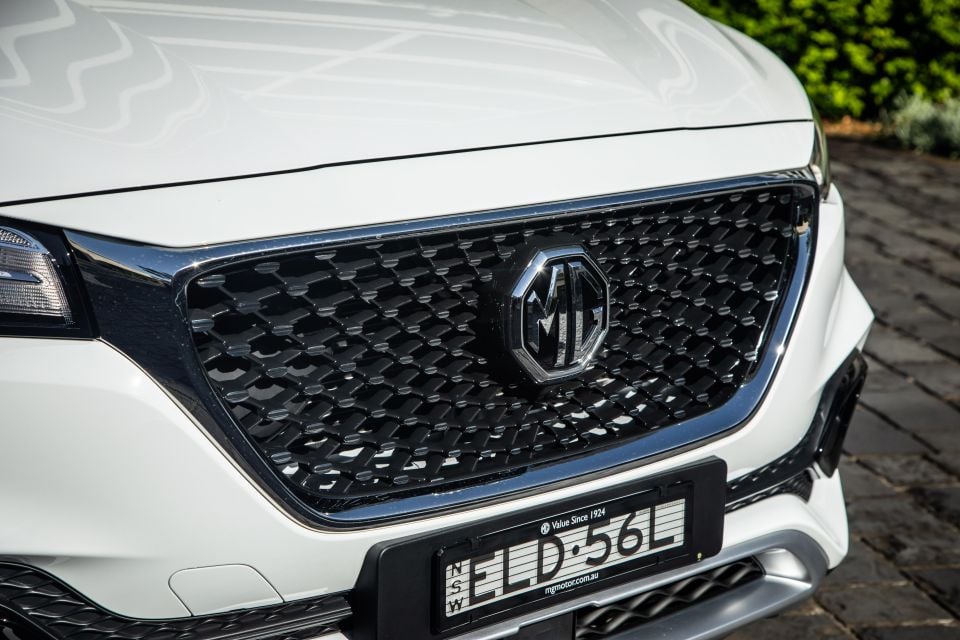
Frankly, bar the obvious difference in seat trim, I really had to pour over the on-paper disparities between the Core and the Excite I recently tested to notice much tangible difference between them. Such is the dignity with which the most-affordable HS presents itself and delivers in the experience.
The caveat, of course, is that its goodness comes indelibly attached to “for under $30k drive-away”.
The Core doesn’t benchmark the medium-sized SUV segment much anywhere though clearly that’s not its mandate. What it does do is demonstrate how value-laden a sub-$30k can be without compromising fundamental goodness in the drive, in safety and more.
It does so to a degree that ought to give MG’s key rivals cause for thought and, if MG’s sales continue to track north, concern.
Click the images for the full gallery
Where expert car reviews meet expert car buying – CarExpert gives you trusted advice, personalised service and real savings on your next new car.


Josh Nevett
1 Day Ago


Josh Nevett
3 Days Ago
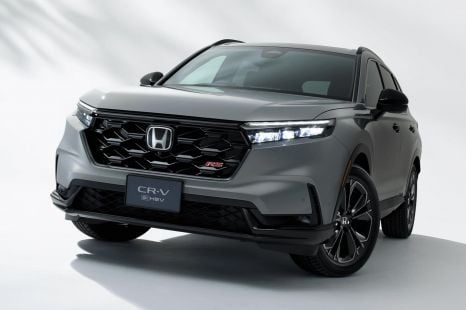

James Wong
5 Days Ago


Derek Fung
5 Days Ago


CarExpert.com.au
8 Days Ago
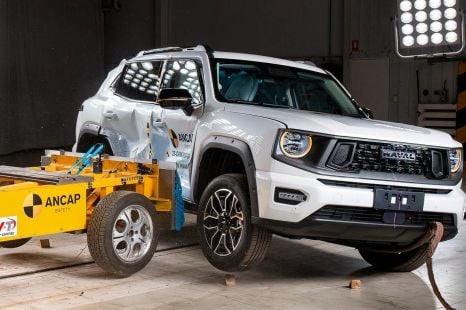

James Wong
8 Days Ago